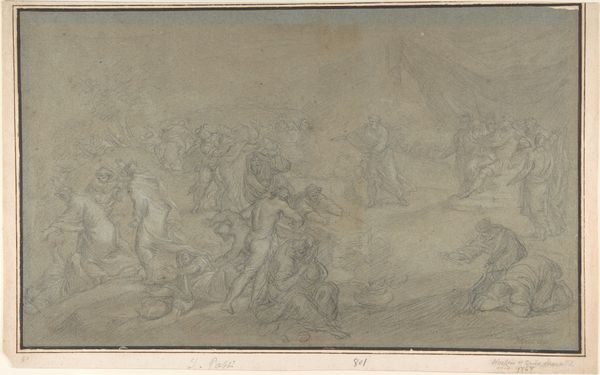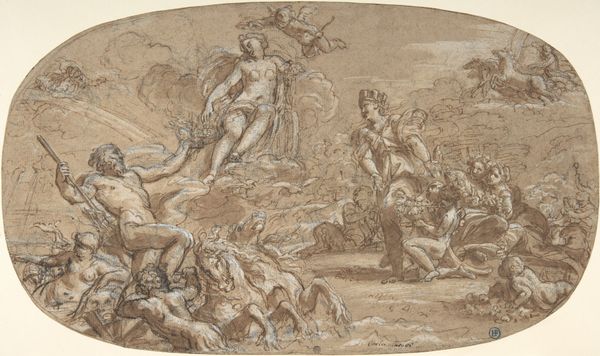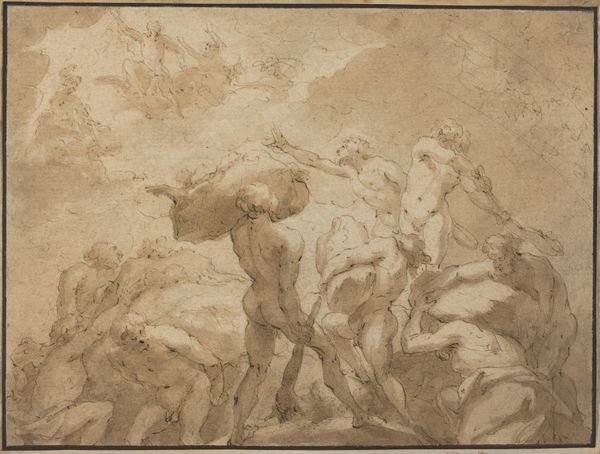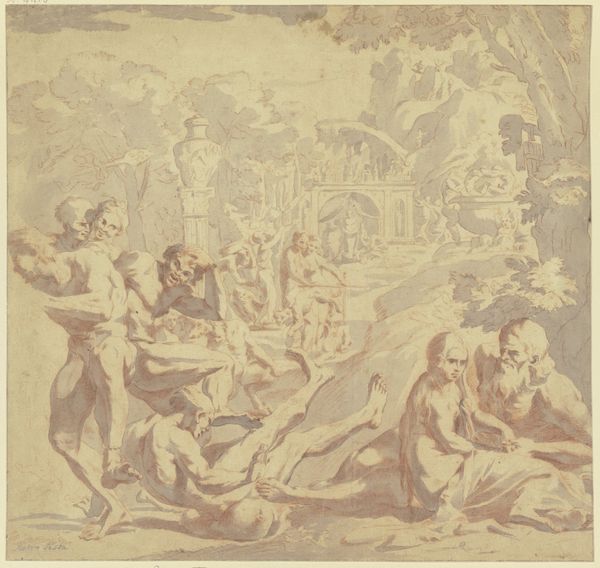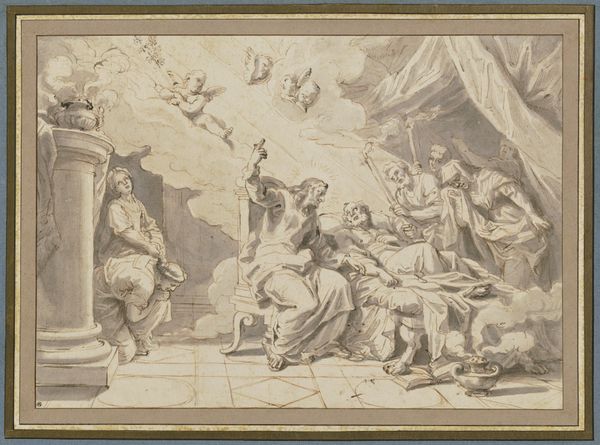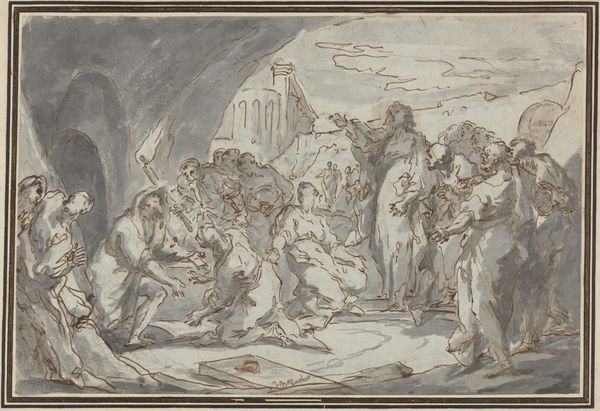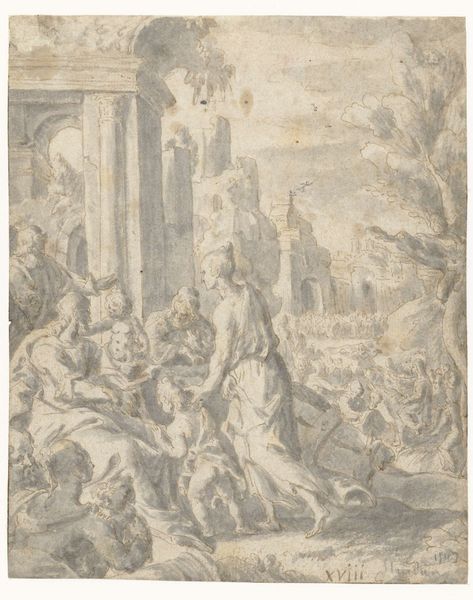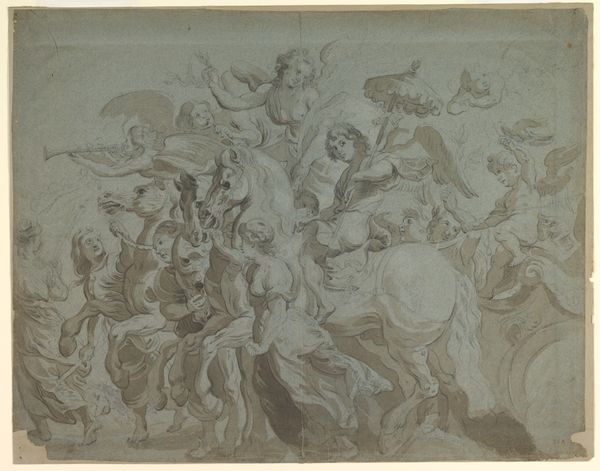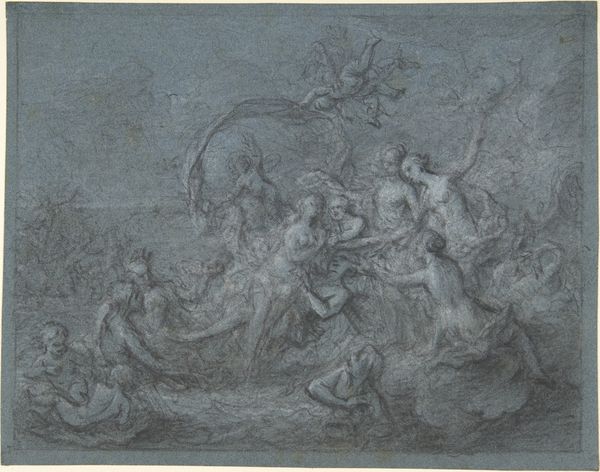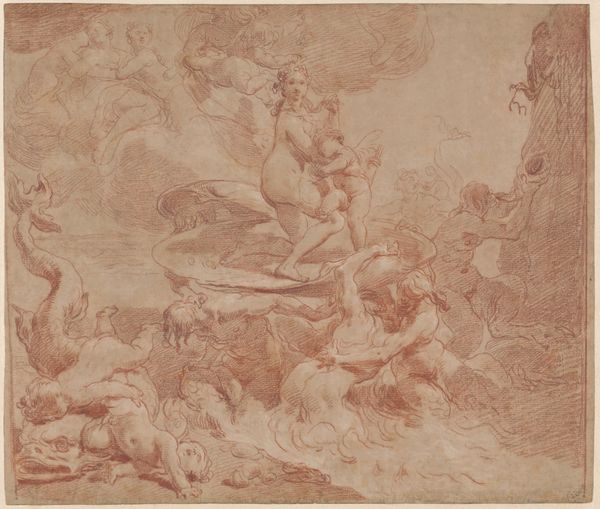
Copyright: Public domain
Editor: So, this is "Allegorie on the battle of Șelimbăr," a drawing by Hans von Aachen, from 1599. The use of charcoal and watercolor gives it a ghostly, unfinished quality, despite the dramatic subject matter. What compositional elements stand out to you? Curator: The composition, indeed, orchestrates a visual discourse, one embedded in Mannerist sensibilities transitioning into Baroque drama. Note the spiraling arrangement of figures; they eschew a flat, frieze-like structure in favor of dynamism. Observe how the tonal range – subtle washes of grey and minimal color – influences our reading. Are we invited to interpret it more as a study than a completed representation? Editor: Possibly. The figures seem caught mid-motion. It does feel more like a preparatory sketch. The high contrast directs our focus to the nude figure and the figures surrounding. What do you make of this central positioning? Curator: Indeed. That strategically placed female form anchors the visual plane, operating within a network of gazes and gestures. Consider the lines' qualities: swift, assured marks, balanced by areas left intentionally bare. Aachen manipulates the medium to create focal points amid implied, not explicitly detailed, forms. How might the textural variance contribute to the overall visual effect? Editor: It definitely lends itself to an energetic feel, especially with the contrasting washes. It’s also a very busy piece. It could take me a while to process the battle's nuances and meaning fully. Curator: I concur. The active lines generate a complex visual experience. But reflect on what’s achieved through formal devices alone, and you recognize this preliminary work has immense expressive potential through structure and line. Editor: I see what you mean! Even stripped of explicit context, the arrangement and execution speaks volumes about tension and implied narrative. Curator: Precisely. Now consider where those principles may apply to larger art historical frameworks and movements.
Comments
No comments
Be the first to comment and join the conversation on the ultimate creative platform.
